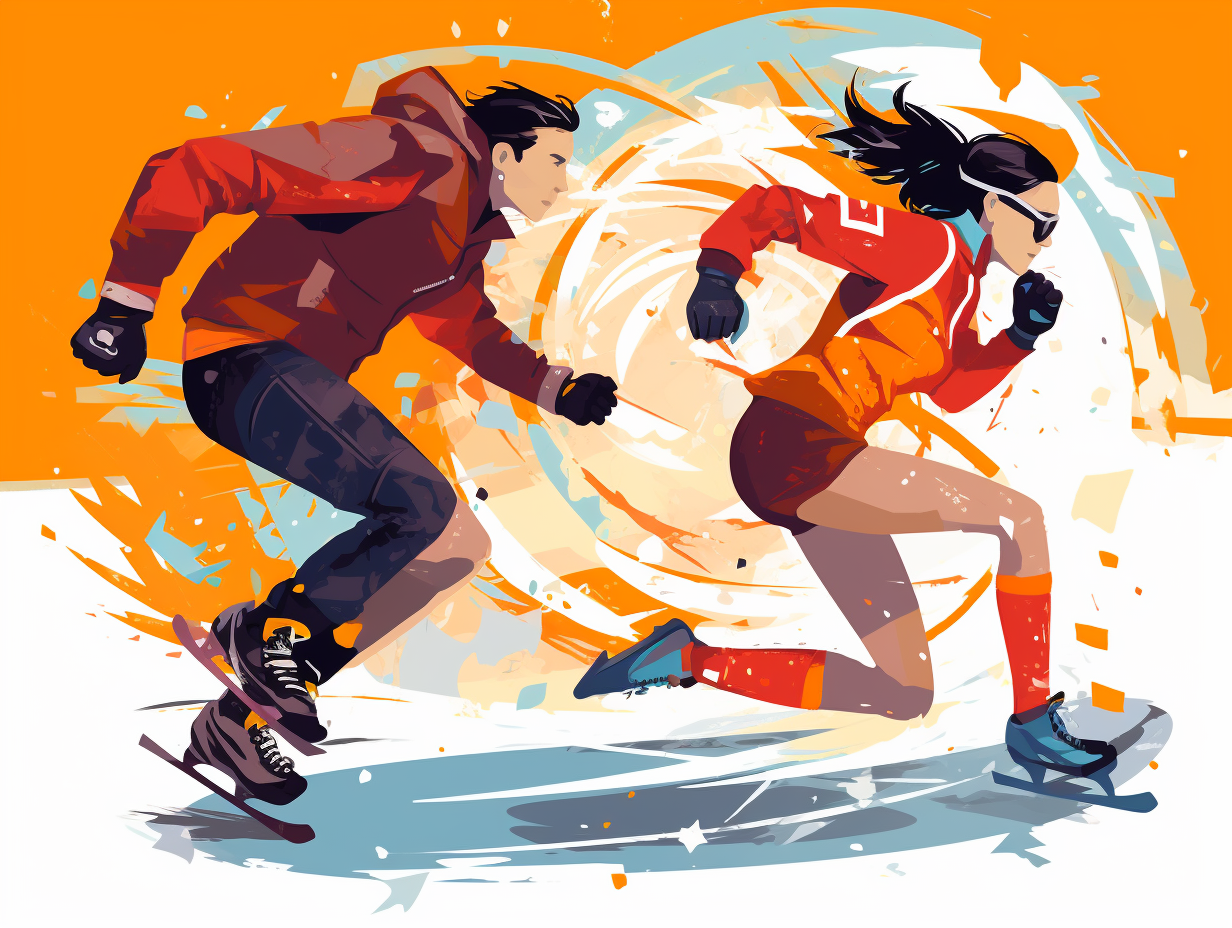Slide into Excitement: Top 12 Unbelievable Fun Facts About Luge You Need to Know!

1. Fastest Lugers: Swiss Speed Demon and Skating Penguins
Strap on your ice skates, grab your trusty sled, and hold onto your helmets because we're diving into the lightning-fast, toboggan-terrorizing world of luge: The Swiss speed demon, Damian Andrey, holds the record for the fastest luger ever, hitting a jaw-dropping 101.83 mph on a paved track in 2017, while Olympic competitors usually zoom between 74 and 95 mph, clad in aerodynamic suits, spiked gloves, and more worthy of a superhero's ensemble to keep them safe as they plunge feet first down those frosty chutes.
Source => popsugar.com
2. Luge Athlete's Skills: Neck Muscle Enthusiasts Unite
Lugers: part athlete, part human cannonball, and part neck muscle enthusiast! Did you know that these speeding daredevils require a fusion of explosivity, coordination, control, stamina, and technique, in addition to building their neck and trunk muscles and incorporating injury prevention exercises, in order to maintain their velocity on the icy track?
Source => fittoplay.org

Did you know skeleton sliders can achieve speeds above 80 mph? Discover the wild alchemy of physics, gravity, and aerodynamics that make this thrilling sport so spine-chillingly fast!
=> Fun Facts about Skeleton-Sport
3. Street Luge: A Daredevil's Answer to Skateboarding
In a world where skateboarders got tired of standing and said "let's go supersonic in a supine position!": Street luge was born in the 1970s in Southern California, taking the sport off icy tracks and onto paved roads, with approximately 1200 active riders competing worldwide, and a world record held by Mike McIntyre at a breakneck speed of 101.98 mph (164.12 km/h) on September 10, 2016.
Source => en.wikipedia.org
4. Mind-Boggling Twists and Turns: Penguin on a Mission
Hurtling down an icy path like a penguin on a mission, luge athletes embrace their need for speed as they navigate mind-boggling twists and turns with grace and precision: Behold the thrill of luge, where sliders can reach up to 90 miles per hour on custom-built sleds, tackling a 120-meter drop course in under a minute, all while maintaining an aerodynamic position and expertly navigating the icy terrain.
Source => sportsedtv.com

5. A Frosty Debut: Luge's Olympic Entrance in 1964
Like a penguin on ice skates, the luge event slipped and slid its way into the 1964 Innsbruck Winter Olympics, leaving fans sliding on the edge of their seats: What was initially planned as a frosty debut in 1960 found its true calling in 1964 – with Germany swiftly chilling the competition, swooping up five of the nine medals, including two golds, on the icy slopes of the Olympic Sliding Centre Innsbruck.
Source => en.wikipedia.org
6. Superhuman Training Regime: Lugers in Summer
Luge athletes may prefer a thrilling winter workout, but their summer training rivals that of a professional swimmer, weightlifter or gymnast: Lugers develop immense upper body strength and hand power through a mix of off-season swimming, weight training, and calisthenics, making their starts lightning-fast and propelling them through the course with expert precision – all the while, coaches carefully analyze each practice run, utilizing digital camera footage and advanced software to optimize sled performance for maximum speed and control.
Source => adventure.howstuffworks.com
7. Icy Fast & Furious: Luge Athletes Defy Gravity
Ever wondered what it feels like to experience life in the fast lane of an icy version of "The Fast and the Furious"? Well, look no further than the adrenaline-pumping world of luge! No Vin Diesel included, though: these fearless luge athletes can reach speeds of over 140 km/h (87 mph), with the current record held by Austria's Manuel Pfister, who slid his way to an incredible 154 km/h (96 mph) on a track in Whistler, Canada before the 2010 Winter Olympics.
Source => en.wikipedia.org
8. Spandex Superheroes: Aerodynamic Suit Up
Move over, superheroes in spandex: luge athletes have got the ultimate snug suit game going on! With skin-tight speed suits and aerodynamic booties, they defy drag and look fabulous gliding down icy tracks, a face shield and neck strap guarding against the elements while coolly wielding spiked gloves to propel themselves into victory - all on a brake-less sled governed by the subtle power of leg movement.
Source => nbcolympics.com
9. Bench Pull Strength: The Key to Luge Starts
Who needs bulging biceps when bench pull strength is what really matters—at least for those who dare to slide down an icy chute faster than a speeding snowball: A study on the Austrian national luge team revealed that isometric bench pull strength is the key factor in determining maximum push-off speed during the luge start (R2 = 0.750), making it crucial for coaches to develop this specific strength in their daredevil athletes.
Source => researchgate.net

10. Human Rockets: Luge Athletes Take on G-force
Hold onto your sleds, folks, because luge athletes are basically the Fast and the Furious of the ice world: They can reach breakneck speeds of up to 140 km/h while lying on their backs, maneuvering their sleds with only their legs and shoulders as they whip around icy turns that exert up to 5g of force – rivaling even the best fighter pilots in sheer intensity.
Source => cbc.ca
11. Pass the Pre-Race Checks: Dedication to Safety
When luge athletes aren't busy impersonating human rockets, they play a little game called "pass the pre-race checks": These thorough inspections include weighing both sled and speedster and comparing their sled runner temperatures to an official "control" runner. Maintaining weight limits and ensuring fair conditions exemplify luge's dedication to safety and equity in this exhilarating sport.
Source => nbcolympics.com
12. High-Speed Mattress Mimicker: Graceful Icy Slides
Ever wondered about the exhilarating art of gracefully sliding down an ice track at breakneck speeds while lying down? Meet luge, the high-speed mattress mimicker of winter sports: Participants rocket down a 1615m-long track at speeds up to 145 km/h, lying flat on their backs on a slim, covered sled, competing in men's singles, doubles, women's singles, and team relay events for a total of 12 shiny medals.
Source => olympics.com
Related Fun Facts




















